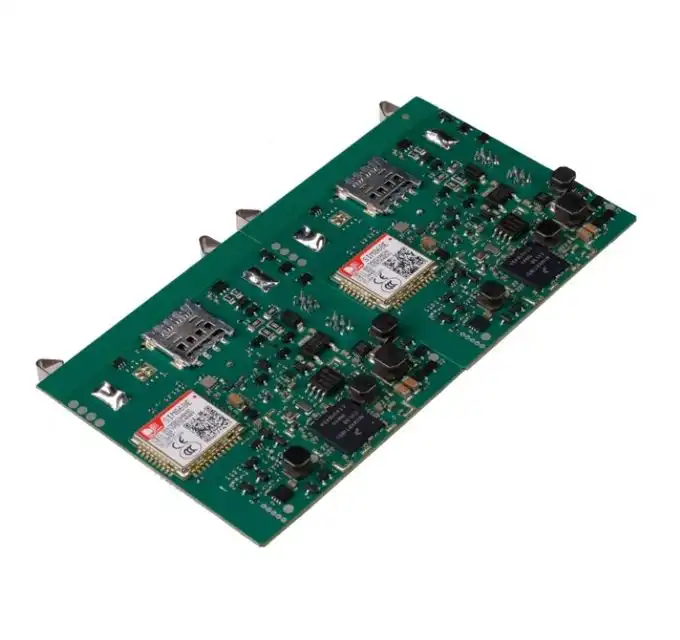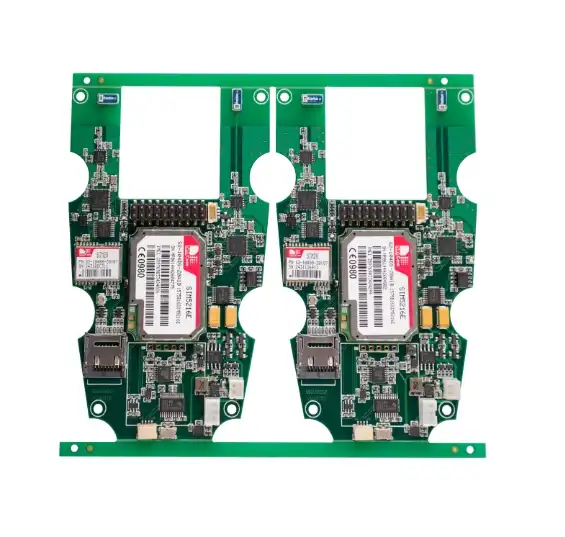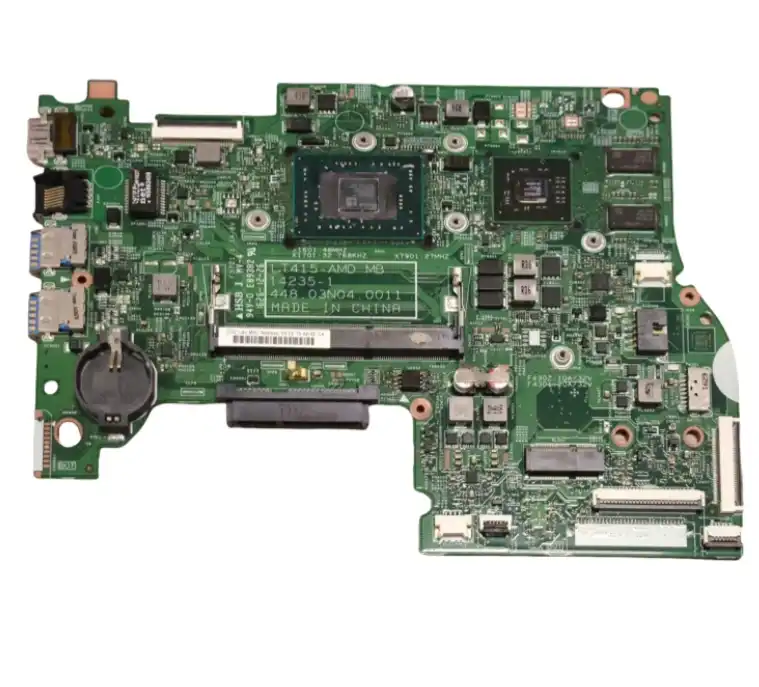Grasping PCB Prototyping Fundamentals
The Importance of PCB Prototyping for Startups
PCB prototyping plays a pivotal role in the product development cycle for startups. It allows companies to validate their circuit designs, identify potential issues, and make necessary adjustments before committing to large-scale production. This iterative process helps minimize risks, reduce costs, and accelerate time-to-market for new electronic products.
For startups, PCB prototyping offers several key benefits:
- Design Verification: Prototypes allow engineers to test the functionality and performance of their circuits in real-world conditions.
- Cost Reduction: Identifying and resolving issues early in the development process can significantly reduce expenses associated with design changes during mass production.
- Investor Demonstrations: Functional prototypes can be powerful tools for showcasing product concepts to potential investors and stakeholders.
- Regulatory Compliance: Prototypes enable startups to conduct preliminary tests for electromagnetic compatibility (EMC) and safety standards.
Key Stages in the PCB Prototyping Process
The PCB prototyping process typically involves several stages:
- Schematic Design: Creating a detailed circuit diagram that outlines the electrical connections and components.
- PCB Layout: Translating the schematic into a physical board layout, considering factors such as component placement and trace routing.
- Design for Manufacturability (DFM) Check: Reviewing the design to ensure it meets manufacturing requirements and optimizing for production.
- Prototype Fabrication: Manufacturing a small number of PCBs based on the finalized design.
- Component Sourcing and Assembly: Procuring the necessary components and assembling them onto the fabricated boards.
- Testing and Validation: Conducting thorough tests to verify the prototype's functionality and performance.
- Design Iteration: Making necessary adjustments based on test results and repeating the process as needed.
Choosing the Right Prototyping Method
Startups have several options when it comes to PCB prototyping methods:
- In-House Prototyping: Using desktop PCB printers or CNC machines for rapid iterations, suitable for simple designs.
- Professional PCB Fabrication Services: Outsourcing to specialized manufacturers for higher quality and more complex prototypes.
- Rapid Prototyping Services: Utilizing quick-turn PCB services for fast turnaround times, ideal for time-sensitive projects.
- Advanced Prototyping Techniques: Exploring options like 3D-printed electronics or flexible PCBs for innovative product designs.
The choice of prototyping method depends on factors such as design complexity, required turnaround time, budget constraints, and in-house capabilities.
Optimizing PCB Prototype Design for Startups
Design Considerations for Successful Prototyping
When designing PCB prototypes, startups should keep the following considerations in mind:
- Component Selection: Choose readily available components to avoid supply chain issues and minimize costs.
- Layout Optimization: Carefully plan component placement and trace routing to improve signal integrity and reduce electromagnetic interference.
- Power Distribution: Ensure proper power distribution across the board to prevent voltage drops and noise issues.
- Thermal Management: Consider heat dissipation requirements for components that generate significant heat during operation.
- Test Points and Debug Features: Incorporate test points and debug headers to facilitate testing and troubleshooting during the prototyping phase.
- Modular Design: Where possible, design modular subsystems that can be easily modified or replaced without affecting the entire board.
Software Tools for PCB Prototype Design
Startups have access to a variety of software tools for PCB design and prototyping:
- KiCad: A popular open-source EDA suite that offers comprehensive PCB design capabilities.
- Autodesk Eagle: A versatile PCB design tool with a user-friendly interface and extensive component libraries.
- Altium Designer: A professional-grade PCB design software with advanced features for complex designs.
- CircuitMaker: A free, community-driven PCB design tool suitable for collaborative projects.
- EasyEDA: A cloud-based PCB design platform that integrates with component suppliers for seamless ordering.
When selecting a PCB design tool, consider factors such as learning curve, cost, available features, and integration with other tools in your development workflow. Choosing the right software not only streamlines the design process but also enhances the accuracy and efficiency of PCB prototyping, ensuring smoother transitions from concept to production and reducing potential design errors early in development.
Design for Manufacturability (DFM) Best Practices
Implementing DFM principles during the prototyping phase can save time and resources in the long run. Some key DFM best practices include:
- Adhering to standard PCB sizes and thicknesses to reduce fabrication costs.
- Using standard drill sizes and avoiding unnecessarily small holes.
- Maintaining adequate clearances between components and board edges.
- Avoiding acute angles in trace routing to prevent acid traps during etching.
- Implementing proper copper balancing to prevent board warping.
- Considering panelization for efficient production of multiple boards.
- Using fiducial marks for accurate component placement during assembly.
By incorporating these DFM practices early in the prototyping process, startups can streamline the transition from prototype to production-ready designs.
Navigating PCB Prototype Manufacturing and Testing
Selecting a PCB Prototype Manufacturer
Choosing the right manufacturing partner is crucial for successful PCB prototyping. Startups should consider the following factors when selecting a PCB prototype manufacturer:
- Capabilities: Ensure the manufacturer can handle your specific requirements, such as board size, layer count, and material specifications.
- Quality Control: Look for manufacturers with robust quality assurance processes, including automated optical inspection (AOI) and electrical testing.
- Turnaround Time: Consider the manufacturer's lead times and ability to meet your project deadlines.
- Cost: Compare quotes from multiple manufacturers, but be wary of sacrificing quality for low prices.
- Communication: Choose a manufacturer that offers clear communication channels and responsive customer support.
- Prototyping Services: Some manufacturers offer additional services like component sourcing and assembly, which can streamline the prototyping process.
PCB Prototype Assembly Techniques
The assembly process for PCB prototypes can vary depending on the complexity of the design and the available resources. Common assembly techniques include:
- Manual Soldering: Suitable for low-volume prototypes and through-hole components.
- Reflow Soldering: Used for surface-mount components, often with the help of solder paste and a reflow oven.
- Wave Soldering: Efficient for boards with a mix of through-hole and surface-mount components.
- Pick-and-Place Machines: Automated assembly for higher-volume prototypes or complex designs.
Startups should choose the assembly method that best fits their prototype requirements, considering factors such as component types, volume, and available equipment.
Testing and Validating PCB Prototypes
Thorough testing is essential to ensure the functionality and reliability of PCB prototypes. A comprehensive testing strategy may include:
- Visual Inspection: Checking for obvious defects, solder joint quality, and component placement.
- Continuity Testing: Verifying electrical connections and identifying short circuits.
- Functional Testing: Running the prototype through its intended operations to confirm proper functionality.
- Environmental Testing: Subjecting the prototype to temperature, humidity, and vibration tests to assess durability.
- EMC Testing: Evaluating electromagnetic compatibility to ensure compliance with regulatory standards.
- Power Consumption Analysis: Measuring power draw and efficiency under various operating conditions.
By implementing a comprehensive testing regimen, startups can identify and resolve issues early in the development process, saving time and resources in the long run.
Conclusion
PCB prototyping is a critical phase in the product development journey for electronics startups. By understanding the fundamentals, optimizing designs, and navigating the manufacturing and testing processes effectively, startups can accelerate their path to market-ready products. Partnering with experienced PCB prototype suppliers and manufacturers can provide invaluable support throughout this process, offering expertise in design optimization, component sourcing, and quality control. As the electronics industry continues to evolve, startups that master the art of PCB prototyping will be well-positioned to bring innovative products to market quickly and efficiently.

FAQ
What is the typical turnaround time for PCB prototyping?
Turnaround times can vary depending on complexity and manufacturer, but often range from 24 hours to 2 weeks.
How many PCB prototypes should a startup order initially?
It's generally recommended to order 3-5 prototypes for initial testing and validation.
Can PCB prototypes be used for small-scale production?
Yes, PCB prototypes can be used for small production runs, but it's important to ensure they meet all necessary quality and regulatory standards.
Professional PCB Prototyping Services for Startups | Ring PCB
Ring PCB offers comprehensive PCB prototyping services tailored for startups, leveraging our 17 years of industry experience. Our one-stop turnkey solutions encompass PCB fabrication, component sourcing, SMT assembly, and rigorous quality control. We specialize in delivering cost-effective, high-quality prototypes with rapid turnaround times. Our expert engineering team provides valuable DFM/DFA optimization to reduce design risks and BOM costs. For professional PCB prototyping services from a reliable manufacturer, contact us at [email protected].
References
1. Johnson, M. (2022). "PCB Prototyping Strategies for Startup Success." Electronics Design Magazine, 45(3), 78-85.
2. Smith, A., & Brown, B. (2021). "Optimizing PCB Prototype Design for Manufacturability." Journal of Electronics Manufacturing, 16(2), 112-127.
3. Lee, C. (2023). "Emerging Trends in PCB Prototyping Technologies." IEEE Transactions on Electronics Packaging Manufacturing, 38(4), 201-215.
4. Wilson, D., & Taylor, E. (2022). "Cost-Effective PCB Prototyping Methods for Hardware Startups." Startup Tech Review, 7(1), 33-48.
5. Garcia, R. (2023). "Quality Assurance in PCB Prototype Manufacturing: A Comprehensive Guide." International Journal of Electronics Production, 29(3), 156-170.






